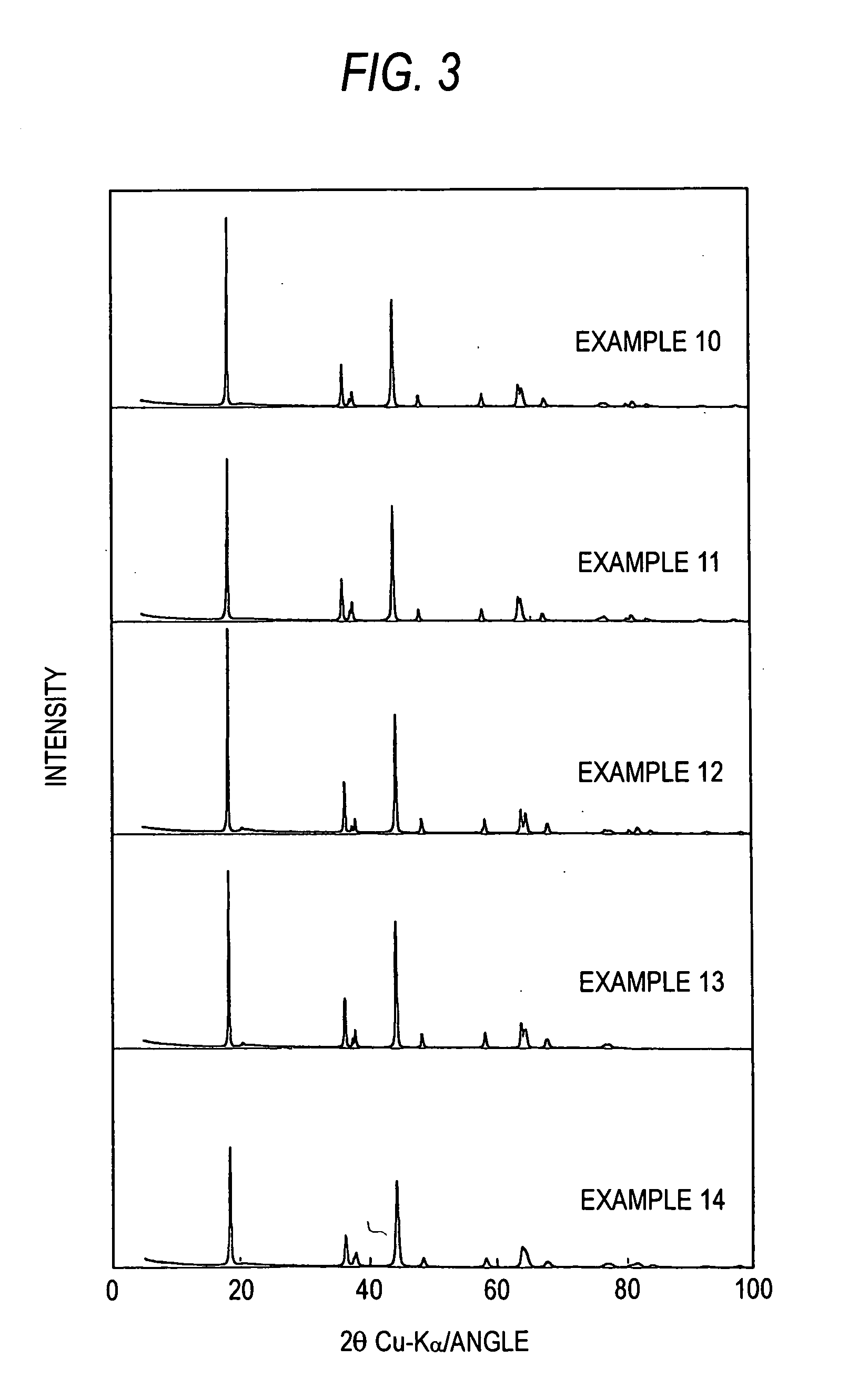Lithium-nickel-manganese composite oxide, processes for producing the same, and use of the same
a composite oxide and lithium-nickel technology, applied in the direction of manganates/permanganates, nickel compounds, cell components, etc., can solve the problems of poor reproducibility of cycle retention or output characteristics, insufficient output characteristics and charge/discharge cycle characteristics of positive-electrode materials employing the lini/sub>0.5/sub>mn/sub>0.5/sub>, and hardly regarded as a material that can meet all the electrochemical
- Summary
- Abstract
- Description
- Claims
- Application Information
AI Technical Summary
Benefits of technology
Problems solved by technology
Method used
Image
Examples
example 1
[0073] To 2,500 g of an aqueous solution of 0.5 mol / L manganese sulfate and 0.5 mol / L nickel sulfate was supplied 5,600 g of 1 mol / L sodium hydrogen carbonate at a rate of 60 g / min while keeping the aqueous solution at 50° C. with stirring / mixing. After the supply, the slurry was kept at 50° C. with stirring and thus aged for 20 hours. After the aging, the pH of the slurry was 9.8. This slurry was filtered and the solid matter was washed to obtain 600 g of a carbonate of nickel and manganese. A hundred grams of lithium carbonate (99.5 wt %) and an appropriate amount of pure water were added to the carbonate of nickel and manganese to regulate the resultant slurry so as to have a solid concentration of 20 wt %. This slurry was treated with a wet medium-agitating mill to pulverize the particles to an average particle diameter of 0.9 μm. From this mixture slurry which had undergone pulverization, the water was removed by vaporization with a spray dryer. Thus, dry particles in the form ...
example 2
[0080] The same procedure as in Example 1 was conducted, except that the amounts of the starting materials to be fed were changed so as to yield a final product having the composition represented by Li1+1 / 9+(1+1 / 9) / 20Ni4 / 9−(4 / 9) / 20Mn4 / 9−(4 / 9) / 20O2 (=Li1.166Ni0.422Mn0.422O2). The product gave an X-ray diffraction pattern characteristic of the crystal system C12 / ml.
[0081] The initial discharge capacity, high-rate discharge proportion, and cycle retention were 145 mAh / g, 90.7%, and 99.95%, respectively.
example 3
[0082] The same procedure as in Example 1 was conducted, except that the amounts of the starting materials to be fed were changed so as to yield a final product having the composition represented by Li1+1 / 9−(1+1 / 9) / 20Ni4 / 9+(4 / 9) / 20Mn4 / 9+(4 / 9) / 20O2 (=Li1.056Ni0.467Mn0.467O2). The product gave an X-ray diffraction pattern characteristic of the crystal system C12 / ml.
[0083] The initial discharge capacity, high-rate discharge proportion, and cycle retention were 148 mAh / g, 89.2%, and 99.92%, respectively.
PUM
 Login to View More
Login to View More Abstract
Description
Claims
Application Information
 Login to View More
Login to View More - R&D
- Intellectual Property
- Life Sciences
- Materials
- Tech Scout
- Unparalleled Data Quality
- Higher Quality Content
- 60% Fewer Hallucinations
Browse by: Latest US Patents, China's latest patents, Technical Efficacy Thesaurus, Application Domain, Technology Topic, Popular Technical Reports.
© 2025 PatSnap. All rights reserved.Legal|Privacy policy|Modern Slavery Act Transparency Statement|Sitemap|About US| Contact US: help@patsnap.com



